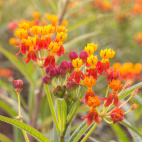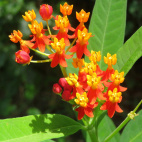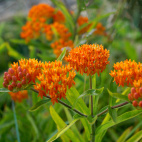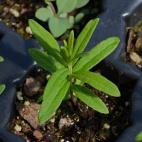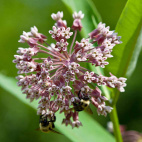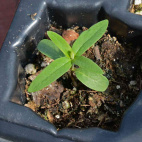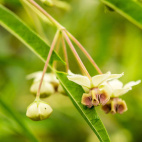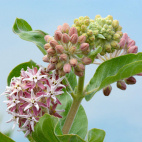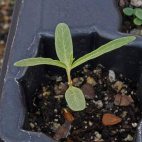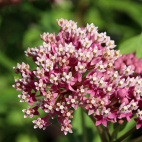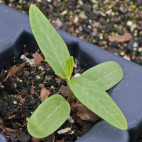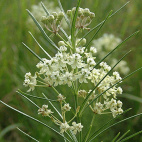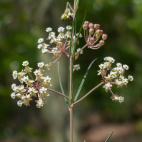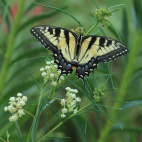Color
Availability
USDA Zone
Region
Type
Duration
Season
Germination
Soil
Sunlight
Height
Use
Narrow Your Search
Color
Availability
USDA Zone
Region
Type
Duration
Season
Germination
Soil
Sunlight
Height
Use
Wildflowers - Milkweed Seeds
-
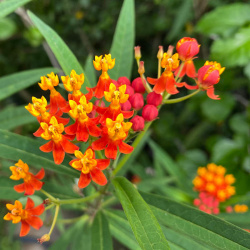 On Sale!
Blood Flower Seeds
Asclepias curassavica
Also known as tropical milkweed, these brilliant red and yellow blossoms explode with color in their first growing season. Although this species is a member of the Milkweed family, recent studies have shown that it actually may be detrimental to the Monarch Butterfly, especially in southern climates where the plants can survive year-round. The plants can harbor diseases that harm the Monarch, and disrupt their normal migratory patterns. Please only use this plant as an annual, and do not let it winter over!Quick Viewx
On Sale!
Blood Flower Seeds
Asclepias curassavica
Also known as tropical milkweed, these brilliant red and yellow blossoms explode with color in their first growing season. Although this species is a member of the Milkweed family, recent studies have shown that it actually may be detrimental to the Monarch Butterfly, especially in southern climates where the plants can survive year-round. The plants can harbor diseases that harm the Monarch, and disrupt their normal migratory patterns. Please only use this plant as an annual, and do not let it winter over!Quick ViewxBlood Flower Seeds
Asclepias curassavica
Also known as tropical milkweed, these brilliant red and yellow blossoms explode with color in their first growing season. Although this species is a member of the Milkweed family, recent studies have shown that it actually may be detrimental to the Monarch Butterfly, especially in southern climates where the plants can survive year-round. The plants can harbor diseases that harm the Monarch, and disrupt their normal migratory patterns. Please only use this plant as an annual, and do not let it winter over!
$3.48 Pkt - $14.49 / Oz -
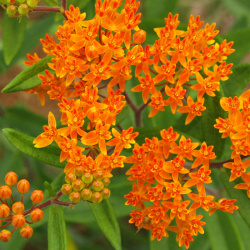 Butterfly Weed Seeds
Asclepias tuberosa
One of the most striking of native plants, Butterfly Weed lights up the prairies with its blazing orange flowers. Monarch Butterflies thrive on this plant, so it is a must for any butterfly garden on sandy soil. Butterfly milkweed seed thrives in rocky or sandy soil, typically in open fields or along roadsides.Quick Viewx
Butterfly Weed Seeds
Asclepias tuberosa
One of the most striking of native plants, Butterfly Weed lights up the prairies with its blazing orange flowers. Monarch Butterflies thrive on this plant, so it is a must for any butterfly garden on sandy soil. Butterfly milkweed seed thrives in rocky or sandy soil, typically in open fields or along roadsides.Quick ViewxButterfly Weed Seeds
Asclepias tuberosa
One of the most striking of native plants, Butterfly Weed lights up the prairies with its blazing orange flowers. Monarch Butterflies thrive on this plant, so it is a must for any butterfly garden on sandy soil. Butterfly milkweed seed thrives in rocky or sandy soil, typically in open fields or along roadsides.
$3.48 Pkt - $24.00 / Oz -
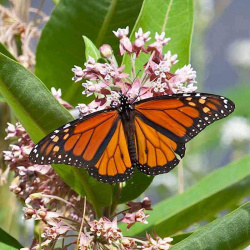 Common Milkweed Seeds
Asclepias syriaca
This familiar wildflower is a significant food source for monarch caterpillars and butterflies, and so it is used for butterfly gardens and waystations. This common variety spreads easily, but most gardeners do not mind if it spreads a bit.Quick View$3.48 Pkt - $12.65 / Oz
Common Milkweed Seeds
Asclepias syriaca
This familiar wildflower is a significant food source for monarch caterpillars and butterflies, and so it is used for butterfly gardens and waystations. This common variety spreads easily, but most gardeners do not mind if it spreads a bit.Quick View$3.48 Pkt - $12.65 / Oz -
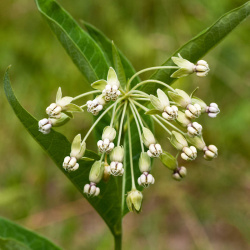 Poke Milkweed Seeds
Asclepias exaltata
These tall, elegant stalks can be found in woodland areas across the eastern United States and Canada. The white flower clusters are great for attracting monarch butterflies to a shaded garden.Quick Viewx
Poke Milkweed Seeds
Asclepias exaltata
These tall, elegant stalks can be found in woodland areas across the eastern United States and Canada. The white flower clusters are great for attracting monarch butterflies to a shaded garden.Quick ViewxPoke Milkweed Seeds
Asclepias exaltata
These tall, elegant stalks can be found in woodland areas across the eastern United States and Canada. The white flower clusters are great for attracting monarch butterflies to a shaded garden.
$4.96 Pkt - $270.00 / Oz -
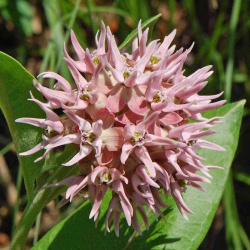 Showy Milkweed Seeds
Asclepias speciosa
A popular native wildflower in western North America, Showy Milkweed commonly occurs on rocky slopes, woodland areas, or streams. The sweet-scented pink blossoms draw many butterflies, so you will want this in your garden if you like butterflies!Quick View$3.48 Pkt - $17.72 / Oz
Showy Milkweed Seeds
Asclepias speciosa
A popular native wildflower in western North America, Showy Milkweed commonly occurs on rocky slopes, woodland areas, or streams. The sweet-scented pink blossoms draw many butterflies, so you will want this in your garden if you like butterflies!Quick View$3.48 Pkt - $17.72 / Oz -
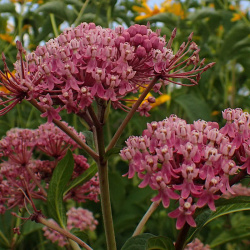 On Sale!
Swamp Milkweed Seeds
Asclepias incarnata
These showy, pink flowers give off a sweet scent similar to cinnamon or vanilla. Attractive to butterflies, this variety flourishes in swamps or along streams, so it is a great option for a butterfly plant in a wet setting. Swamp milkweed plants are a staple of many wetland plantings.Quick Viewx
On Sale!
Swamp Milkweed Seeds
Asclepias incarnata
These showy, pink flowers give off a sweet scent similar to cinnamon or vanilla. Attractive to butterflies, this variety flourishes in swamps or along streams, so it is a great option for a butterfly plant in a wet setting. Swamp milkweed plants are a staple of many wetland plantings.Quick ViewxSwamp Milkweed Seeds
Asclepias incarnata
These showy, pink flowers give off a sweet scent similar to cinnamon or vanilla. Attractive to butterflies, this variety flourishes in swamps or along streams, so it is a great option for a butterfly plant in a wet setting. Swamp milkweed plants are a staple of many wetland plantings.
$3.48 Pkt - $14.49 / Oz -
 On Sale!
Whorled Milkweed Seeds
Asclepias verticillata
This is a milkweed that grows in many regions of the United States. It is a late-blooming variety that is especially valuable as a butterfly host. The white flower clusters on the long, narrow leaves are a late-season food source for the Monarch Butterfly.Quick Viewx
On Sale!
Whorled Milkweed Seeds
Asclepias verticillata
This is a milkweed that grows in many regions of the United States. It is a late-blooming variety that is especially valuable as a butterfly host. The white flower clusters on the long, narrow leaves are a late-season food source for the Monarch Butterfly.Quick ViewxWhorled Milkweed Seeds
Asclepias verticillata
This is a milkweed that grows in many regions of the United States. It is a late-blooming variety that is especially valuable as a butterfly host. The white flower clusters on the long, narrow leaves are a late-season food source for the Monarch Butterfly.
$3.75 Pkt - $72.00 / Oz






